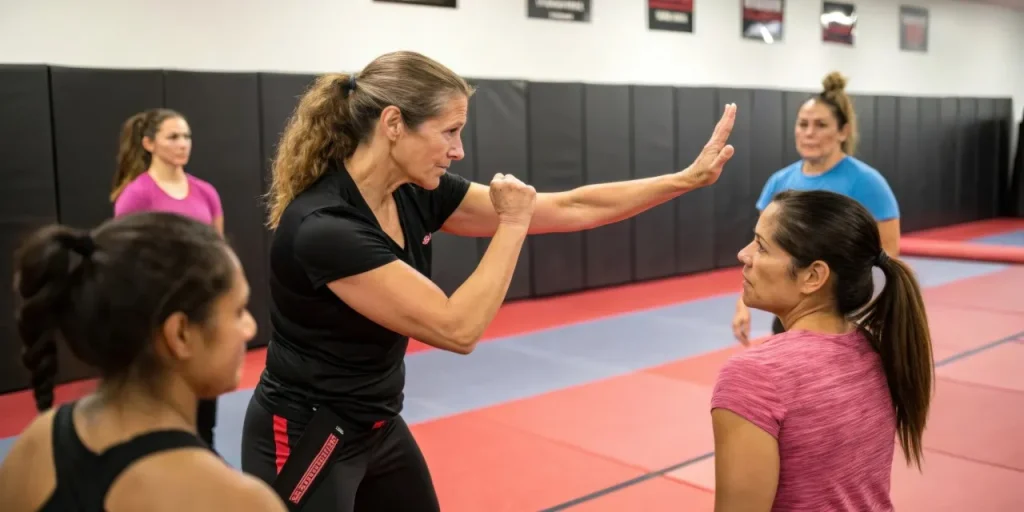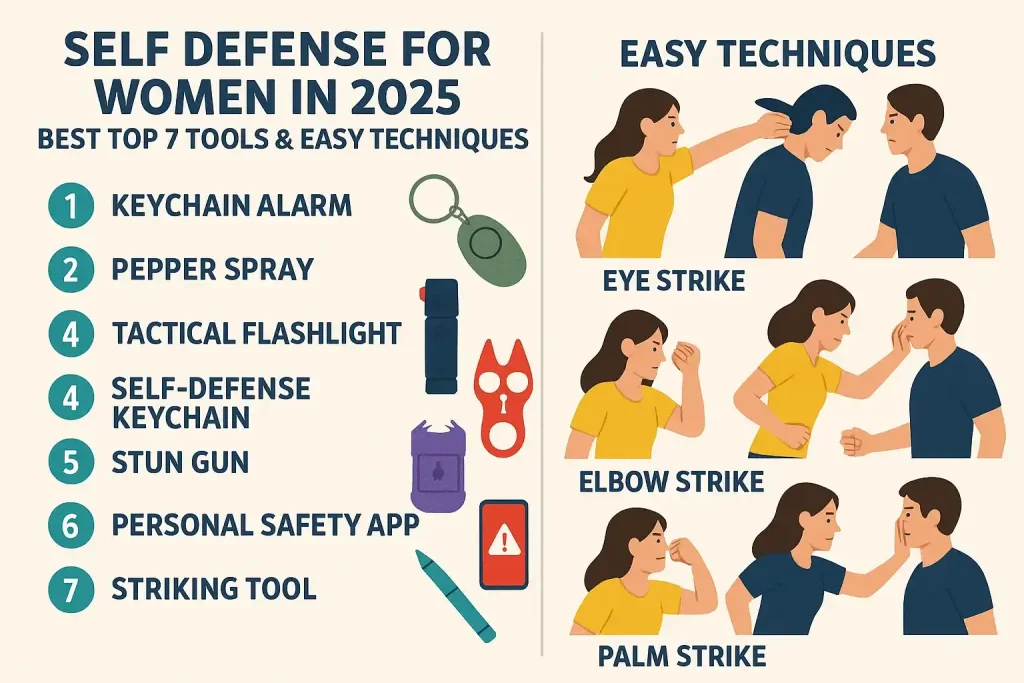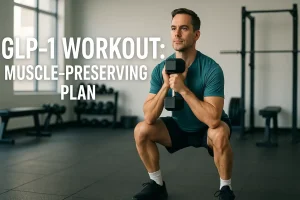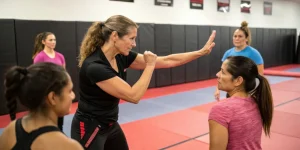Self Defense for Women in 2025: Best Top 7 Tools & Easy Techniques

Hands-on self-defense training empowers women with real-world safety skills.
Introduction: Self Defense for Women Why Every Woman Should Learn Self Defense in 2025
Imagine walking home alone at night and hearing footsteps quickly approaching behind you. Your heart pounds, your senses heighten, and your mind races through possibilities. This scenario plays out countless times daily for women worldwide. In 2025, personal safety concerns have reached unprecedented levels, with searches for “self defense for women” increasing by 300% over the past two years 3. But here’s the empowering truth: you don’t need to be a martial arts expert to protect yourself effectively.
The self defense industry has evolved dramatically, offering innovative tools and techniques specifically designed for women’s unique safety needs. This comprehensive guide cuts through the noise to bring you the most effective, practical, and legally sound self defense strategies that actually work in real-world situations. Whether you’re a college student, working professional, or stay-at-home mom, these insights could prove life-saving.
Self Defense for Women: Your Ultimate 2025 Empowerment Guide
Self defense for women is no longer just about learning karate chops. It’s about empowerment, awareness, and having the right tools and knowledge to protect yourself confidently in any situation. If you’ve ever felt a pang of fear walking to your car at night or wondered what you would do if confronted, this guide is for you. We’re breaking down the modern world of self defense for women into actionable steps, covering the best gear that fits in your purse and the simplest techniques that work regardless of your size or strength. Let’s turn that anxiety into assurance.
The Psychology of Self Defense: Mindset Before Techniques
Self defense begins long before any physical confrontation occurs. The most powerful tool you possess isn’t a pepper spray or tactical flashlight—it’s your awareness and intuition. Research shows that attackers primarily target people who appear distracted, uncertain, or vulnerable. By projecting confidence and awareness, you automatically reduce your attractiveness as a target.
Develop a “360-degree awareness” habit whenever you’re in public spaces. This doesn’t mean living in fear but maintaining conscious observation of your surroundings. Avoid the “smartphone zombie” trap where you’re completely engrossed in your device, unaware of who or what is around you. Many self defense experts recommend the “3-second rule”—every few seconds, quickly scan your environment for anything unusual or potentially threatening.

Trust your intuition—that gut feeling when something doesn’t seem right. Psychology research has consistently shown that intuition often processes danger signals before our conscious mind does. If a person, situation, or environment feels wrong, remove yourself without hesitation or concern about “overreacting.” Your safety is more important than someone else’s opinion.
Top 5 Self Defense Tools for Women in 2025
Table: Comparison of Popular Self Defense Tools for Women
| Tool | Effectiveness | Ease of Carry | Legal Considerations | Best For |
|---|---|---|---|---|
| Personal Safety Alarm | High (deterrent) | Excellent | No restrictions | All situations |
| Pepper Spray | Very high | Good | Check local laws | Distance defense |
| Tactical Flashlight | High | Good | No restrictions | Nighttime protection |
| Self Defense Keychain | Moderate to high | Excellent | Check local laws | Close encounters |
| Smart Wearable | Varies | Excellent | No restrictions | Prevention & alerts |
1. Personal Safety Alarms: Your First Line of Defense
Modern personal safety alarms have evolved far beyond simple noise-makers. The best 2025 models feature 180-decibel sirens (equivalent to a jet engine), strobe lights to disorient attackers, and automatic emergency alert systems that notify your contacts and local authorities with your GPS location. Devices like the “SafeGirl Guardian” connect to your smartphone and can be activated by voice command, button press, or even automatically if the device detects sudden movement patterns associated with assault.
Why these work so effectively: Attackers seek easy targets and privacy for their actions. A piercing alarm drawing immediate attention to your situation is the last thing they want. Statistics show that 85% of would-be attackers flee when a personal alarm is activated 3.
2. Pepper Spray: Classic Protection with Modern Innovations
Pepper spray remains one of the most effective physical deterrents available, with new formulations offering greater range and stopping power. The 2025 models feature improved delivery systems that work effectively in windier conditions and gel formulations that reduce blowback risk. Many now include UV marking dye to help police identify attackers later.
Important legal note: Pepper spray regulations vary by state and country. Before purchasing, check your local laws regarding concentration levels, container size, and carrying permissions. Some areas require permits while others restrict certain formulations entirely.
3. Self Defense Keychains: Discreet but Effective
These unassuming tools serve dual purposes—they look like ordinary keychains but feature pointed edges designed to create pressure pain or break car windows in emergencies. The “Kubaton” style remains popular, but 2025 has seen innovations like those with built-in DNA collectors that scrape skin samples from attackers for later identification.
Effectiveness tip: These tools require some training to use effectively. Consider watching tutorial videos or taking a brief workshop to learn proper striking techniques against vulnerable areas.
Essential Physical Techniques That Actually Work
You don’t need to become a black belt to defend yourself effectively. Focus on these simple but high-impact techniques that work regardless of your size or strength:
The Palm Strike: Your Most Natural Weapon
Forget punching—unless you’re trained, you’re likely to injure your hand more than your attacker. Instead, use the heel of your palm to strike upward against the attacker’s nose or chin. This utilizes your body’s natural strength without requiring precise technique.
How to practice: Stand facing a mirror and practice extending your arm quickly, making contact with the heel of your palm. Aim for an upward motion as if trying to lift someone’s head back. The goal isn’t to knock someone out but to create enough surprise and pain to break away.
The Groin Kick: Don’t Underestimate This Classic
It remains effective because the groin area contains numerous nerve endings and is rarely protected. The key is commitment—kick like you mean it rather than a tentative tap. Use the hard bone of your shin or the top of your foot rather than your toes to avoid injury.
Follow-up immediately with escape—don’t pause to see the effect. The moment of impact is your window to create distance and seek help.
Eye Gouging and Throat Strikes: Last Resort Options
These extreme measures should only be used when you feel your life is in immediate danger. Even slight pressure to the eyes causes involuntary reflex and temporary vision impairment. An open-hand strike to the throat can disrupt breathing and create escape time.
Remember: The goal of self defense is never to “win a fight” but to create opportunity to escape to safety.
Legal Considerations: Knowing Your Rights and Limitations
Self defense laws vary significantly by state, making it crucial to understand local regulations. Most jurisdictions follow the “reasonable force” principle—you may use force proportional to the threat you’re facing. Once the immediate threat has passed, continuing to attack could potentially lead to criminal charges.
Some states have “duty to retreat” laws requiring you to attempt escape before using force, while others have “stand your ground” laws removing this requirement. Research your specific state laws or consult with a legal professional to understand your rights and responsibilities.
Documentation matters: If you’re forced to use self defense techniques, report the incident to police immediately and be prepared to provide your account of what occurred. If possible, collect contact information from any witnesses.
Creating Your Personal Safety Plan
Knowledge without implementation provides limited protection. Take these steps to develop your personalized safety strategy:
- Audit your daily routines—identify potentially vulnerable situations in your regular schedule
- Prepare your tools—choose 2-3 defense tools that fit your lifestyle and legal environment
- Practice basic techniques—spend 5 minutes daily rehearsing strikes and responses
- Establish check-in routines—use apps like “Noonlight” or “bSafe” to create safety networks
- Plan escape routes—wherever you are, mentally note exits and potential safe spaces
Conclusion: Empowerment Through Preparation
The most profound benefit of learning self defense isn’t just physical protection—it’s the confidence and peace of mind that comes from knowing you have options if threatened. In 2025, women have more effective tools and resources available than ever before. The investment of time to learn these techniques and select appropriate tools is minimal compared to the lifelong security gained.
Your safety is worth prioritizing. Start today by choosing one tool to acquire and one technique to practice. In weeks, you’ll develop muscle memory and confidence that could make all difference in an emergency situation.
Check out more self defense inforamtion and techniques in our defense hub
Key External Reference:
Title: Self-Defense Training to Reduce Violence Against Women and Girls: An Integrative Review
- Journal: Journal of the American Psychiatric Nurses Association (2025)
- Authors: Not specified in the provided text.
- DOI: 10.1177/10783903241254308
Summary: This integrative review synthesized evidence from 19 publications (from 2011-2023) and found strong evidence that women’s self defense training leads to fewer incidents of attempted rape, completed rape, and nonconsensual sexual contact compared to controls. Participants also reported fewer PTSD symptoms and other positive outcomes





